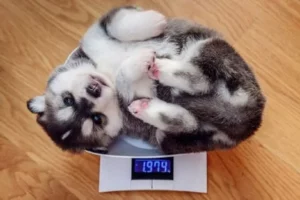Pets are surviving longer than ever before because of better treatment, but as they age, they require more care and attention. Regular veterinary exams can identify issues in older animals before they develop or become life-threatening, increasing the likelihood that your pet will live a longer, healthier life.
What constitutes “old age” for a pet?
Depending on the breed, cats and small dogs are typically deemed “senior” at seven years old. In comparison to smaller breeds, larger breed dogs tend to live shorter lives and are frequently regarded as seniors around the age of 5 to 6 years. Contrary to popular perception, dogs do not mature by 7 human years for every year in dog years.
Little Dogs
Dogs weighing less than 20 pounds mature faster than larger breeds, as they are generally completely developed by 6 to 8 months of age. After this, though, they mature more gradually.
A small-breed dog can live up to 16 years, which is often longer than a large-breed dog. As a result, a small, healthy dog may not be regarded as a senior until they are 12 years old.
It’s always possible for something to go beyond the norm, and that’s exactly what happened here. Small breeds with a shorter life span, like Cavalier King Charles Spaniels, are deemed senior at around 8 years old.
Large Dogs
Large dog breeds typically live shorter lives than smaller breeds; thus, they reach their golden years earlier.
An excellent general indicator of large breed dogs is the labrador. Since they live an average of 12 years, they would start their senior years at the age of 8 to 9. Giant breeds, like the Bernese Mountain Dog, have much shorter life spans; ‘Berners’, for example, live to be on average 6 to 8 years old, therefore being regarded as seniors at 4 to 5.
Why are senior pets more likely to have certain problems?
It’s essential to keep in mind that a pet’s organ systems are changing along with the external symptoms of aging, such as a slowing down of movement and a graying of the hair coat. An elderly pet is more susceptible to illnesses like arthritis, cancer, and heart, kidney, and liver problems. There is a very high rate of cancer among pets over the age of ten, constituting nearly half of all pet-related deaths. Cats experience cancer at a somewhat lower rate than dogs, who experience it nearly at the same rate as people.
Similar to humans growing older, it is common for pets to experience some hearing and sight loss. Older animals may develop cataracts and not respond to voice commands as well.
“When you teach your pet hand signals at an early age, you may be able to communicate more effectively with it as its hearing becomes less acute as it ages.”
You can securely maintain control of your pet without using words by using simple hand signals like “come” or “stop”. Pets with impaired vision or even blindness can navigate their surroundings with ease in a familiar setting. Avoid moving or adding furniture or other objects that could become obstructions if your pet’s eyesight is deteriorating.
Activity changes in pets
Your pet may have arthritis if it begins to run away from energetic play or running or if it has problems performing daily tasks like jumping onto its favorite chair or into the family car. A pet with arthritis may also become irritated when touched or petted (particularly in the arthritic areas) and may appear more disappointed or irritable. You should have your pet inspected by your veterinarian to identify the root of the issues because there could be other causes for these changes. Veterinarians have access to a wide range of treatments to help manage your pet’s arthritis, and straightforward home modifications like orthopedic pet beds, raised feeding platforms, steps, and ramps may also be helpful for your elderly pet.
Animal Behavior Changes
Your pet’s changing behavior may be one of the early signs of aging. These modifications may result from discomfort or pain (arthritis, for example), deteriorating vision or hearing, or aging in general. Older animals may exhibit some behavioral abnormalities as a result of cognitive impairment, which is comparable to senility in humans.
Frequent behavioral alterations in senior pets that could be indicators of cognitive impairment include:
- Quickly terrified by loud noises
- Increased meowing and barking
- Confusion or a lack of a direction
- Home contaminating (“accidents”)
- Less enthusiasm for playing
- Ignoring spoken commands
- Uncommonly combative behavior
- Worry or nervousness
- A rise in wandering
- Modifications to sleep habits
- Continuing the same behavior
- More irritated or grumpy than normal
Why does weight affect the health of senior pets?
The weight of an elderly pet is one of the most significant factors that can negatively impact the animal’s health. Obesity in older animals raises the risk of arthritis, respiratory problems, diabetes, heart disease, high blood pressure, skin issues, cancer, and other ailments. It’s advised to take your pet to the vet frequently because an overweight pet may not exhibit any early symptoms of health issues. Your veterinarian can propose a suitable diet and other measures to help your pet maintain a healthy lifestyle after assessing your pet’s condition.
Concern should also be expressed if an elderly pet begins to lose weight suddenly, especially if the animal is a cat. Common reasons for weight loss in older cats include diabetes, kidney illness, and hyperthyroidism (an overactive thyroid gland).
Decreased endurance
Dogs who are overweight have lower stamina and endurance. It takes a lot more effort to move around with all that added weight. The respiratory system, heart, and muscles are all asked to do activities for which they were not intended.
Decreased liver functioning
Since the liver is where fat is stored, an increase in fat naturally accumulates there when a dog is overweight. The term for this is hepatic lipidosis. Reduced liver function may be a consequence of this disorder.
Weakened immunological response
Dog obesity is directly linked to a reduction in their ability to fight off bacterial and viral diseases. Particularly, salmonella infections and canine distemper seem to be more severe in overweight dogs.
Skin and hair problems
In overweight dogs, the danger of skin and coat illnesses is elevated. The skin produces a greater variety of oils, and it can fold in on itself to form pockets that are perfect for the buildup of oils and the emergence of infections.
The New, Young Pet
As your pet ages, it may be tempting to bring a new pet into the house, but you should speak with your veterinarian before bringing a puppy or kitten home. An older pet should ideally be introduced to a new pet when it’s still active and capable of moving away from the younger pet if it needs a “time-out.” Senior animals need to be aware that they have a calm, safe location where they can go and relax.
“Petting Consent” test.
Practice the consent test before using it to determine how a pet feels about being petted or touched by a youngster. If the animal approaches for a cuddle, let your youngster pet it for two to three seconds before stopping. Your child may resume brushing the animal if it draws nearer or makes a sign that it would like more attention. Simply throw a treat on the ground far from you and give them a break if they move away or appear hesitant. Regular application of this consent test during child-pet interaction will guarantee that your new pet appreciates the attention and touch, and it will comfort them that they can leave if necessary rather than escalate defensive behavior if they feel threatened.




